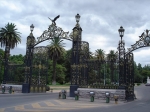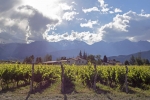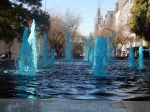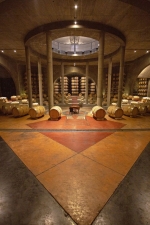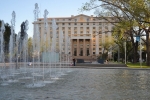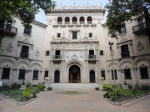Information about Mendoza
Mendoza is a city in western Argentina capital with a population of 114,822 inhabitants. It is one of the major cities, with the Greater Mendoza the fourth largest agglomeration after
Buenos Aires, Cordoba and
Rosario, with 1,086,000 inhabitants. It is the capital of the Province of Mendoza and is located on the plains east of the vast Cordillera de los Andes. Its area is 105 km² while its metropolitan area extends 368 km².
This is one of the most important cities in the Southern Cone. It is a major industrial center, a key strategic point in the relations of MERCOSUR. It also has a good quality of life as the big cities of Argentina and a modern motorway network.
It is a cosmopolitan city due to the large number of mainly German and English immigrants who arrived in Argentina in the early twentieth century, and today by immigrants from countries in the region such as
Bolivia,
Chile, Paraguay and
Peru. They have a varied cultural offer and a major nightlife, other major cities. It has a very strong European influence, the rest of Argentina, which is evident in the architectural styles, too broad avenues. It is a major tourist destination and a university center.
As in big cities, the population trend is neutral, as there are few places available. Instead, its population increases in its metropolitan area at a rate of 2 per year, higher than Córdoba and Rosario population growth, so that in the future Mendoza could become the second largest city in Argentina. This situation is the sum of many affluent families choose to live in closed or gated communities outside the city center, which agglomerate population increase is recorded in the remaining districts of Mendoza.
In 1551, sent by the governor and general captain of Chile, Pedro de Valdivia, and departing from Cuzco (Alto Peru), Francisco de Villagra is the first Spaniard to explore the Cuyo region, commanding one hundred and eighty men. The discoverer was in good contact with the Huarpe Indians, and having spent the winter with them, he returned to Chile. Dead Valdivia, and shortly after having been removed from Villagra as governor of Chile, the new governor, Garcia Hurtado de Mendoza, son of the Viceroy of Peru Andrés Hurtado de Mendoza, entrusted Captain Pedro del Castillo to found and settle Cuyo .
On February 22, 1561, Pedro del Castillo arrived in the valley of Huentota, and took possession of the region by raising the royal standard. Between two sandstorms he founded the new City, on March 2, calling it "Mendoza City of the New Valley of La Rioja". The initial location of Mendoza was located in what is now known as La Media Luna in the District of Pedro Molina, located in the Department of Guaymallén, on the eastern margin of the channel currently known as Cacique Guaymallén. The city was under the jurisdiction of the Captaincy General of Chile, although both this Captaincy and all the extensions of Spanish territory south of the Isthmus of Panama. at that time they were part of the Viceroyalty of Peru.
On March 28, 1562, she was transferred two arcabuz shots to the west of the foundation point made by Pedro del Castillo, situating the new site located some 100 meters west of the Cacique Guaymallén channel, in the current position of the Pedro del Castillo square. Through this operation, in charge of Juan Jufré, he also won the honor and the right to the monetary prizes of founder of cities that had already been collected by Pedro del Castillo in the original foundation.
The city maintained friendly relations with the native peoples who lived in the area before the foundation, who had already received as friend to Villagra in 1551, as the Huarpes, who according to some sources were not subjected or exterminated by the Spanish Conquest, but rather they simply mestizo and integrated with the Spanish immigrant population. Other sources, however, indicate that many Huarpes were sent under the encomienda system to Chile and that they were abused and exploited in similar fashion to many other conquered peoples


